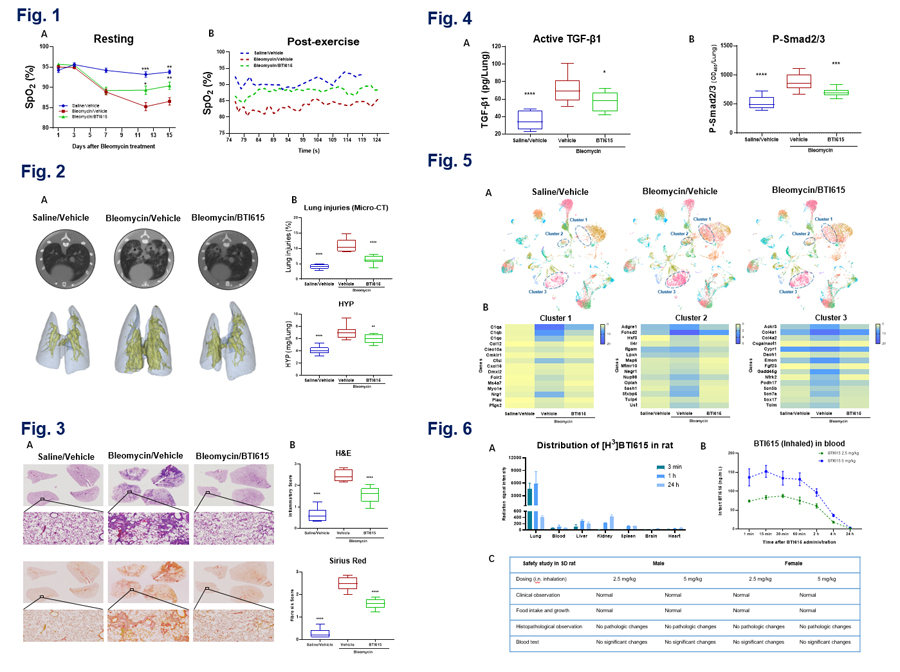Abstract
Rationale: Fibrotic-niche impairs the capacity of tissue repairing, regeneration and homeostasis maintaining. Dysregulated TGF-?1 activity as a master orchestrator of fibrotic-niche drives the vicious cycling of fibrosis, and synthetic peptide BTI615 is designed to rectify this pathological context.
Methods: Rats were intratracheally dosed of 0.4 USP bleomycin on Day 1, and 200 ?g/kg/day BTI615 aerosol was inhaled from Day 4-15. SpO2, Micro-CT Imaging, histopathology, scRNA-seq, and biochemical markers were analyzed.
Results: With simultaneous reductions of active TGF-?1 and P-Smad2/3, BTI615 profoundly improved SpO2 at the resting and post-exercise state, reduced injured lung areas, ameliorated inflammatory cell infiltrations, alveolar collapses and collagen depositions. Transcriptional profiles also showed drastic declines of inflammatory and fibrotic genes in epithelial and immune cells of treated group. Inhaled [H3]-BTI615 favorably distributed to the lung, and then to the liver, kidney etc. In blood, intact BTI615 can be maintained in 2 hrs, and became undetectable at 24 hr. 30× PAD dosages of BTI615 showed no drug-related toxicity in major tissues.
Conclusions: BTI615 successfully suppressed the fibrosis progression by orchestrating the TGF-?1 activity and fibrotic microenvironment. Given its great preclinical efficacy and tolerance, BTI615 is ready to be a novel inhalation in clinical development.
